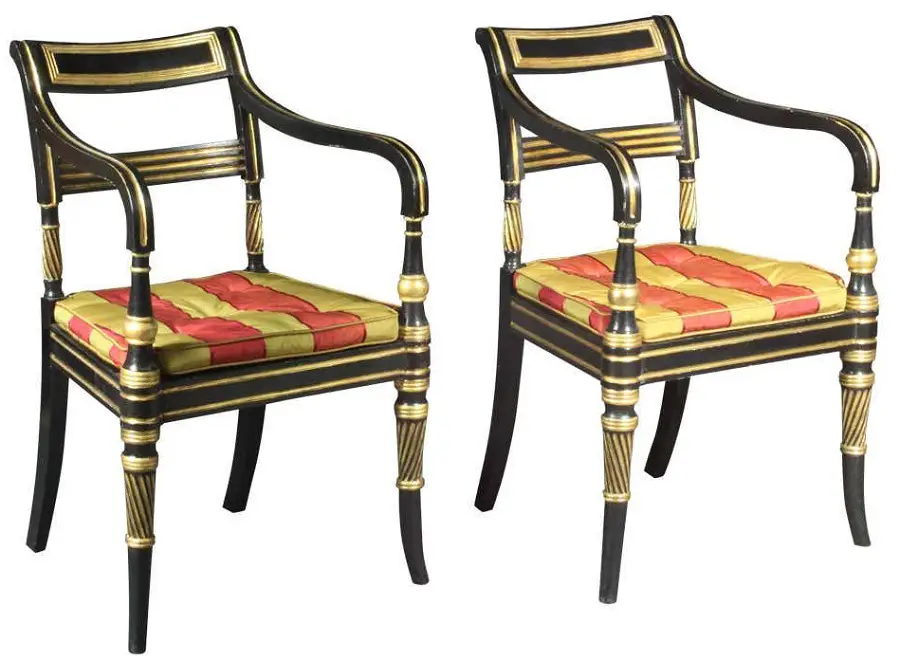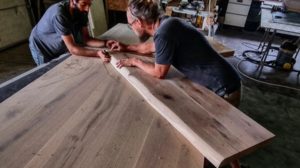Regency is a British style that is not just specific to furniture. The period in which it emerged and developed spans from 1795 to 1837, contemporary with Empire style with which it has many similarities, but also elements that differentiate them. The Regency period was one of great cultural sophistication and achievement in Britain, a period that touched the whole of society, influencing women's and men's fashion, architecture, the arts and not least, furniture. It had strong Roman, Greek and Egyptian influences, as did the Empire style, but also new elements brought in by personalities of the time such as Thomas Sheraton. The style had elegance and personality, remaining attractive to this day. Let's see where the Regency name of the style comes from and what its characteristics are.

Who was it that gave the name to the style
The name of the person who created or designed pieces of furniture that have stood the test of time and become the benchmark for enthusiasts is usually used to name a style. When there is no specific personality, like Thomas Chippendale, for example, it adopts the name of the person who supported and influenced the style or the monarch of that period. Often they were one and the same person. This is also the case with the Regency style, whose name comes from the period when King George IV ruled the United Kingdom as a replacement for his father King George III, who was still alive and suffering from mental illness. During that period (1811-1820) he bore the name Prince Regent, hence the style's name.
George IV had a great influence on the style, encouraging artists and creators by commissioning works. He was a lover of beauty and fun and was also called the 'Prince of Pleasure'. He influenced the style through his passion for elements of Asian cultures, particularly Japanese and Chinese, which he incorporated into commissioned works. The influence of his personality continued after his death in 1830, and the style remained in vogue for almost 10 years.
Regency influences and their defining elements
Unlike earlier periods when the influence of classical styles was played out through decoration and design that suggested this, in the Regency specific elements are copied. Admiration for Roman, Greek and Egyptian styles is very high so any archaeological finds inflame spirits and tend to be translated into the work of the ages. Existing furniture in museums or collections is copied and motifs such as ancient gods, sphinxes, lions or griffins are added. The Asian influence can be seen in the use of bamboo, wood imitating bamboo, ebonised furniture and polished, glossy lacquer. (Ebonizing is turning furniture into ebony-looking furniture by staining much less valuable wood black and varnishing it. A method used a lot in Japan.)
Despite all these influences, Regency furniture has elegance, straight and slender lines, avoiding curved shapes and surfaces. Chair legs are slender, often turned and finished with animal paws. The seat backs are tall, straight and upholstered or shorter and with metal or wooden ornaments. The symmetry of the Empire style is also present here. But the large pieces of furniture are smaller in size, and are shorter to make room on the wall for paintings.
It is used a lot mahogany wood and that of wagons and veneer from palisander, zebrano or mahogany. Brass and ormolu, an imitation of gold, cover the legs of chairs and tables, are used for the lion's head handles of drawers or for the glass door grilles of showcases. Inlaying, intarsia and lacquering with shellac and polishing by French polish.
In short, the main characteristics of the Regency style are:
- Shapes and motifs inspired by ancient Greek, Roman and Egyptian architecture and design.
- Clean and symmetrical profiles, whether straight lines or classic arches and geometric shapes.
- Motifs based on classic symbols - laurel leaf wreaths, acanthus leaves, pound in the shape of the letter 'U'.
- Brass lion heads to give a touch of regal pomp to the furniture. The lion heads with rings also serve as handles on drawers.
- The dark wood creates a majestic and imposing feel. Mahogany was very popular among furniture makers. It kept its natural colour and was varnished to give a high gloss and bring out the grain.
- Rosewood and zebrano veneers with inlays and inlays are used.
- Classic military motifs, coats of arms, swords and shields, brass decorations contrasting with dark wood.
- The chair legs are straight or X-shaped, turned, columnar or sword-shaped. They end in paws, ball-holding paws or brass paws. And the ends of the table legs are dressed in brass. Display cases and bookcases are shorter leaving room on the wall for paintings or other art objects.
The Regency style was very popular and unlike other styles, it never disappeared but adapted by taking on modern elements. It is still sought after and appreciated, the old one by collectors and the newer one by admirers of a romantic world, the world of Jane Austen and Mister Darcy.



























Add comment